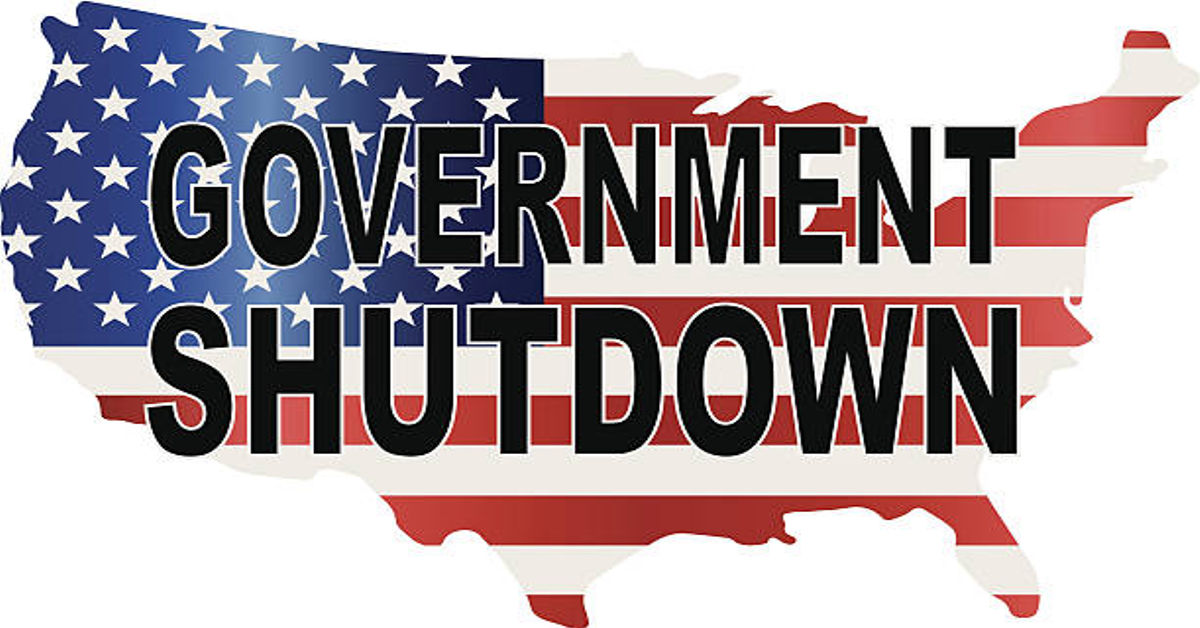A government shutdown occurs when the government temporarily halts or significantly reduces its operations due to the absence of approved funding. It is not a complete closure of the state but a stoppage of certain public functions until political leaders reach a financial agreement. This event is mostly associated with the United States, though similar fiscal gridlocks can happen in other democracies. Understanding the concept requires examining its root causes, operational processes, economic effects, and how it impacts ordinary citizens.
A government shutdown is not merely a political event; it is a multifaceted crisis affecting the economy, governance, and public welfare. When lawmakers fail to pass appropriations bills or temporary funding measures known as continuing resolutions, government agencies lose their legal authority to spend money. Without appropriations, non-essential federal services are suspended, and thousands of public employees are furloughed or required to work without pay. The longer a shutdown lasts, the more severe the disruption becomes.
1. Understanding the Concept of a Government Shutdown
At its core, a government shutdown results from budgetary deadlock — a failure of the legislative and executive branches to agree on spending levels. In systems like that of the United States, Congress holds the “power of the purse,” meaning it must authorize all federal expenditures. The President, however, must sign these appropriations into law. If there is disagreement — often due to differing political or fiscal priorities — the budget cannot move forward, and funding expires at the end of the fiscal year (usually September 30).
The Antideficiency Act, enacted in the United States, forbids federal agencies from spending money without approval. When appropriations lapse, only activities deemed essential to protect life, property, or national security can continue. This legal framework effectively forces agencies to halt non-essential operations until a funding agreement is reached.
2. Types of Government Shutdowns
Government shutdowns can vary depending on the nature of the political dispute and the level of administrative paralysis. The major types are:
| Type of Shutdown | Description | Typical Duration | Examples of Affected Areas |
|---|---|---|---|
| Full Shutdown | All non-essential government departments close. Only emergency services operate. | Usually longer than a week | National parks, passport services, public museums |
| Partial Shutdown | Some agencies have approved budgets while others don’t. | Ranges from a few days to weeks | Agencies without appropriations stop work |
| Technical Shutdown | Brief interruptions caused by procedural delays or late signatures. | Hours to one day | Minimal impact; mostly administrative |
In most cases, the government strives to avoid a full shutdown by passing short-term funding measures, but when political standoffs intensify, even temporary resolutions become impossible.
3. Causes of a Government Shutdown
The causes of a government shutdown are deeply rooted in political, economic, and procedural issues. Here are the main reasons:
A. Political Disagreements
One of the leading causes of shutdowns is disagreement between political parties over budget priorities. For example, one party may demand increased spending on defense while the other insists on boosting social programs. When neither side compromises, appropriations bills stall.
B. Policy Conflicts
Sometimes, lawmakers tie controversial policy riders to budget bills. These can include immigration reform, healthcare funding, or climate change initiatives. If such policies are unacceptable to the opposing side, negotiations collapse.
C. Fiscal Conservatism vs. Spending Expansion
Ideological divides often shape budget debates. Fiscal conservatives prioritize debt reduction and spending cuts, while progressives or populists may advocate for expansive welfare programs. These conflicting economic philosophies lead to prolonged standoffs.
D. Strategic Political Leverage
Parties occasionally use shutdowns as bargaining tools to pressure the executive branch or extract political concessions. This tactic, however, can backfire, resulting in public backlash and loss of trust.
E. Administrative Inefficiency
Sometimes, procedural inefficiencies or delays in drafting and approving bills can unintentionally trigger short-term shutdowns, especially near fiscal year deadlines.
4. The Process of a Government Shutdown
A government shutdown follows a predictable process driven by budgetary law and political behavior. Below is a simplified timeline:
| Stage | Description |
|---|---|
| 1. Budget Proposal | The President submits a proposed budget to Congress outlining priorities. |
| 2. Congressional Review | Congress debates, amends, and passes appropriations bills. |
| 3. Negotiation Breakdown | Political disagreements delay or block passage of bills. |
| 4. Funding Expiration | The fiscal year ends without new appropriations or continuing resolution. |
| 5. Shutdown Begins | Agencies close non-essential operations, and employees are furloughed. |
| 6. Temporary or Final Resolution | Lawmakers reach an agreement and pass funding measures. |
| 7. Resumption of Services | Government operations return to normal, often with back pay for workers. |
This sequence can repeat multiple times in a decade depending on the political climate and the degree of partisanship.
5. Impact of a Government Shutdown
The consequences of a shutdown extend far beyond politics. It affects the economy, citizens, businesses, and even international relations.
A. Economic Impact
A shutdown disrupts the flow of federal money, reduces consumer confidence, and slows economic growth. Furloughed employees spend less, reducing demand for goods and services. Businesses relying on government contracts suffer financial losses.
Table: Economic Impact Overview
| Sector | Impact | Example |
|---|---|---|
| Federal Employees | Temporary loss of income | Workers furloughed without pay |
| Private Businesses | Reduced revenue | Contractors and suppliers face payment delays |
| Stock Market | Short-term volatility | Investors react to fiscal uncertainty |
| Tourism | Decline in visitors | National parks and museums close |
| GDP Growth | Minor to moderate slowdown | Long shutdowns can cut quarterly growth by 0.1–0.3% |
B. Public Services
During a shutdown, essential services like air traffic control, law enforcement, and military operations continue. However, many civilian services stop. Visa and passport processing slows down, federal loan approvals are delayed, and national parks close.
C. Government Employees
Millions of federal employees are either furloughed or required to work without pay. Although they typically receive back pay once the shutdown ends, the interruption creates financial hardship for many households.
D. Social and Humanitarian Effects
Programs that provide assistance to low-income families, such as food aid or housing vouchers, face disruptions. Nonprofit organizations must step in to support vulnerable populations.
E. Political and Institutional Trust
Repeated shutdowns damage public trust in government institutions. Citizens begin to perceive leaders as self-interested or ineffective. International observers may also question the reliability of the nation’s governance model.
6. Historical Examples of Government Shutdowns
While many countries avoid such crises through automatic funding mechanisms, the United States has experienced several notable shutdowns. Below is a summary of major ones:
| Year | Duration | Main Issue | Outcome |
|---|---|---|---|
| 1995–1996 | 21 days | Dispute over Medicare, education, and environmental funding | Led to compromise budget under President Clinton |
| 2013 | 16 days | Affordable Care Act funding dispute | Resolution included temporary funding |
| 2018–2019 | 35 days | Border wall funding dispute | Longest shutdown in U.S. history; ended with temporary reopening |
Each shutdown left a distinct mark on political discourse, economic performance, and public perception of governance.
7. Legal Framework Governing Shutdowns
Shutdowns are not arbitrary acts but are bound by law. The Antideficiency Act (first enacted in 1884 and amended several times) prohibits federal spending in excess of appropriations. This law ensures that no money leaves the Treasury without congressional authorization.
Under this framework, agencies must classify activities as essential or non-essential:
| Category | Definition | Examples |
|---|---|---|
| Essential Services | Necessary to protect human life, safety, or property | Military, air traffic control, law enforcement |
| Non-Essential Services | Can be suspended temporarily without immediate danger | Parks, museums, research grants |
The law also mandates that once funding resumes, all furloughed employees must receive back pay.
8. The Role of Political Negotiation
Shutdowns are ultimately resolved through negotiation and compromise. Political leaders, aware of the economic and social costs, usually reach temporary resolutions to restore funding. However, long-term solutions require bipartisan cooperation, transparency, and reform of the budgetary process.
The key negotiation mechanisms include:
- Passing a Continuing Resolution (CR) to extend funding temporarily.
- Agreeing on Omnibus Spending Bills covering multiple agencies.
- Utilizing Mediation or Bipartisan Committees to reconcile differences.
When political will aligns with public pressure, shutdowns tend to end quickly. However, entrenched polarization can delay resolution, magnifying the consequences.
9. The Human Cost of a Government Shutdown
Beyond statistics, the real burden of a shutdown falls on individuals and families. Federal employees miss paychecks, small business owners lose customers, and communities depending on government support face uncertainty.
Consider a federal worker living paycheck to paycheck — a missed salary can mean unpaid bills, food insecurity, or debt accumulation. Similarly, students awaiting federal aid or researchers relying on government grants see their futures put on hold.
Charitable organizations often step up during these periods, offering emergency relief. However, prolonged shutdowns test the resilience of communities and expose the fragility of financial security in many households.
10. Global Implications of a Government Shutdown
Although most shutdowns occur in domestic contexts, their effects can ripple across borders. For a country with significant global influence, like the United States, a government shutdown can cause concern in international markets. Investors worry about the stability of fiscal policy, and foreign partners may delay agreements or trade decisions.
Furthermore, diplomatic functions such as visa processing, consular services, and foreign aid can be interrupted. This diminishes a nation’s global presence and reliability in international relations.
11. Preventing Future Shutdowns
Preventing shutdowns requires reforms in budget management, political cooperation, and administrative planning. Some possible measures include:
| Preventive Measure | Explanation |
|---|---|
| Automatic Continuing Resolutions | Implement automatic funding to maintain essential operations if Congress fails to pass budgets. |
| Multi-Year Budgeting | Adopt longer-term budget cycles to reduce annual conflicts. |
| Bipartisan Budget Committees | Encourage cross-party collaboration before deadlines. |
| Public Transparency | Increase public awareness of budget processes to pressure leaders toward responsibility. |
| Technological Efficiency | Use digital systems to streamline appropriations tracking and prevent procedural delays. |
In the long run, prevention depends on political maturity and mutual accountability. When leaders prioritize governance over party interests, the risk of shutdowns decreases dramatically.
12. The Economic Recovery After a Shutdown
Once a shutdown ends, recovery begins. Agencies reopen, employees receive back pay, and public services resume. However, the economic effects often linger. Lost productivity cannot always be regained, especially in sectors like research or tourism. Businesses affected by delayed contracts may not fully recover their losses.
Macroeconomically, recovery tends to be faster when the shutdown is short, but longer shutdowns can dent quarterly GDP growth and disrupt consumer confidence for months. Economists often describe the post-shutdown recovery as “delayed normalization” — a gradual return to pre-shutdown activity levels rather than an immediate rebound.
13. Public Opinion and Political Consequences
Public sentiment plays a decisive role in shaping the outcome of shutdowns. Polls often show that citizens blame one party more than the other, depending on media narratives and leadership behavior. Political actors aware of this dynamic sometimes avoid shutdowns to prevent electoral repercussions.
Historically, leaders perceived as responsible for shutdowns suffer temporary declines in approval ratings. However, in highly polarized environments, partisan loyalty can buffer these effects.
Shutdowns also erode trust in government efficiency. Citizens begin to question why bureaucratic mechanisms fail repeatedly and demand reforms to ensure smoother governance.
14. Comparison with Other Countries
While the United States is most frequently associated with shutdowns, other nations have experienced budgetary deadlocks too. However, many have constitutional or statutory safeguards to prevent full government closures.
| Country | Mechanism to Prevent Shutdown | Outcome |
|---|---|---|
| Canada | Automatic interim supply bills | Continuity of essential services |
| United Kingdom | Fixed-term budgets and Crown authority | No shutdowns despite political conflict |
| Germany | Basic Law ensures ongoing funding | Government remains operational during disputes |
| Australia | Governor-General can approve temporary appropriations | Prevents shutdowns from occurring |
These examples illustrate that institutional design plays a major role in avoiding shutdowns. Automatic funding and constitutional flexibility act as stabilizers in many parliamentary systems.
15. Long-Term Solutions and Policy Recommendations
Addressing the recurring threat of government shutdowns requires a blend of structural reform and political culture change. The following recommendations could strengthen resilience:
- Institutionalize Automatic Funding Mechanisms – Avoid complete stoppages by ensuring essential services receive baseline funding regardless of political deadlock.
- Modernize Budgetary Tools – Introduce technology-based forecasting and tracking systems for better transparency.
- Promote Fiscal Responsibility – Implement laws requiring balanced long-term budgeting and limiting the use of shutdowns as political leverage.
- Enhance Civic Education – Encourage citizens to understand budget processes so that public pressure deters political brinkmanship.
- Encourage Consensus Governance – Reform electoral incentives to reward bipartisan negotiation rather than confrontation.
With these changes, shutdowns could become relics of the past rather than recurring political episodes.
16. Conclusion
A government shutdown is more than a political spectacle — it is a reflection of systemic dysfunction within the machinery of governance. Its origins lie in budgetary disagreements, but its impact reverberates across the economy, society, and international relations. While temporary in nature, the effects can be long-lasting, influencing public confidence and national productivity.
Preventing shutdowns demands more than procedural fixes; it requires a cultural shift toward collaboration, accountability, and long-term planning. When political leaders treat governance as a shared responsibility rather than a zero-sum contest, the public reaps the benefits of stability and progress.
Ultimately, the lesson is clear: government shutdowns expose the cost of division and the power of unity. By learning from past crises and reforming the systems that allow them, nations can ensure continuity of governance and safeguard the well-being of their citizens.
Frequently Asked Questions (FAQs)
1. What exactly causes a government shutdown?
A government shutdown happens when lawmakers fail to pass funding bills or continuing resolutions by the fiscal deadline, leaving agencies without legal spending authority.
2. Who is affected during a government shutdown?
Federal employees, contractors, small businesses, and citizens relying on public services are most affected. Essential workers may continue without pay until funding resumes.
3. Do government employees receive back pay after a shutdown?
Yes. Under current laws, federal employees furloughed during a shutdown are entitled to full back pay once operations resume.
4. How long can a government shutdown last?
It can last from a few hours to several weeks. The longest in U.S. history lasted 35 days, from December 2018 to January 2019.
5. How can future shutdowns be prevented?
Shutdowns can be avoided through automatic funding mechanisms, bipartisan budget agreements, and reforms promoting transparency and long-term fiscal planning.









